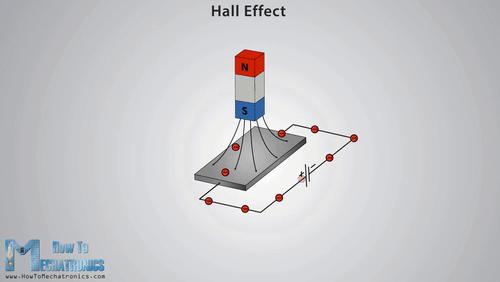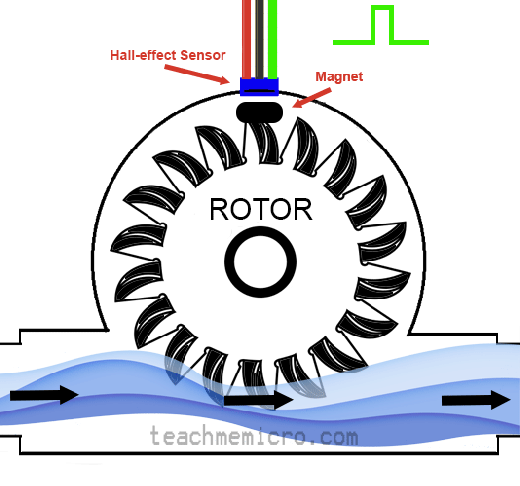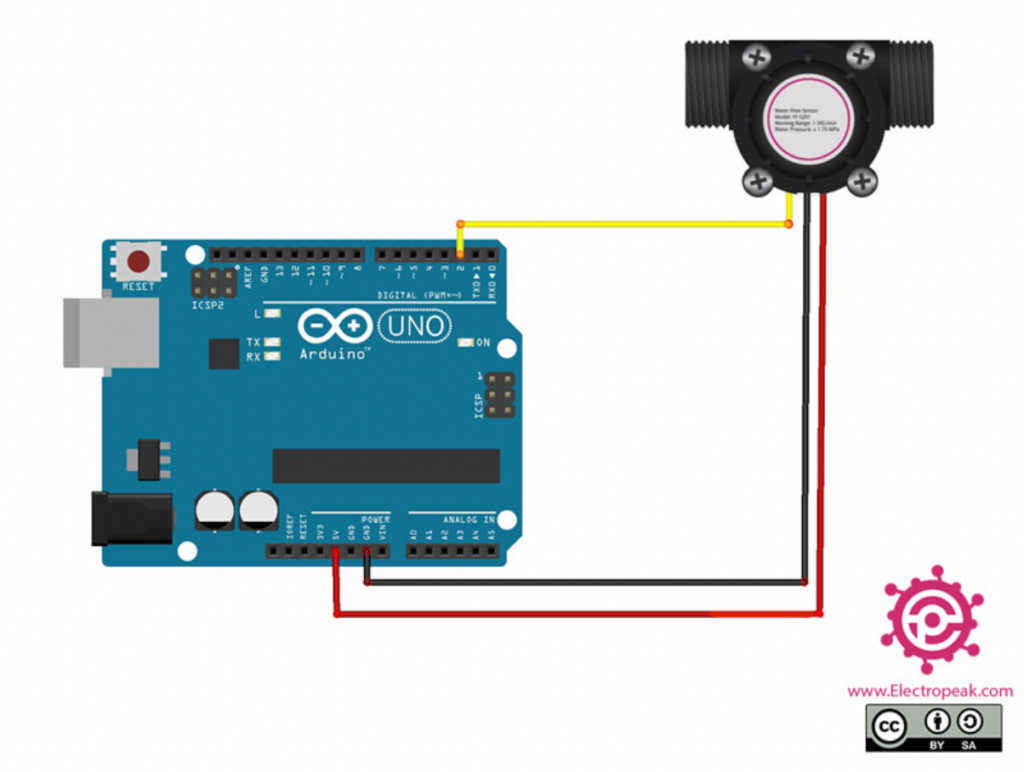เครื่องวัดอัตราไหลของน้ำด้วย Arduino และ YF-S201 Hall Effect Water Flow Meter Sensor
Hall effect คือ ค่าความต่างศักย์ ( Voltage difference ) ( Hall Voltage ) ระหว่างสองฝั่งของตัวนำทางไฟฟ้า ( Electrical Conductor ) ที่กระแสไฟฟ้าวิ่งผ่าน โดยในขณะที่กระแสไฟฟ้าวิ่งผ่าน จะมีสนามแม่เหล็กตั้งฉากกับกระแสไฟฟ้า โดยปรากฎการณ์นี้ค้นพบโดย Edwin Hall ในปี คศ. 1879

ภาพจาก https://howtomechatronics.com/
หลักการทำงานของ YF-S201 มีหลักการทำงานดังต่อไปนี้

เมื่อ rotor หมุน ด้วยจำนวนรอบต่อนาที ( RPM , rounds per minute ) แปรผันตรงกับความเร็วของการไหลของน้ำ เมื่อ rotate หมุนก็จะเกิด pulse wave ขึ้น โดยความถี่ของ pulse wave แปรผันตรงกับความเร็วของการไหลของน้ำ
ตัวอย่างวงจรของการใช้ Hall Effect Sensor กับ Arduino

Project นี้สามารถนำไปใช้ในการตรวจสอบการไหลของน้ำ ในสวน/ไร่ ได้ หากน้ำในท่อส่งน้ำไหลน้อยกว่าที่กำหนด ระบบจะแจ้งเตือนไปยังคนดูแลสวน ให้รีบไปตรวจสอบว่าเกิดสิ่งผิดปกติกับท่อส่งน้ำหรือไม่
Get in Touch with us
Related Posts
- SimpliPOSFlex. 面向真实作业现场的 POS 系统(中国市场版)
- SimpliPOSFlex. The POS Designed for Businesses Where Reality Matters
- 经典编程思维 —— 向 Kernighan & Pike 学习
- Classic Programming Thinking: What We Still Learn from Kernighan & Pike
- 在开始写代码之前:我们一定会先问客户的 5 个问题
- Before Writing Code: The 5 Questions We Always Ask Our Clients
- 为什么“能赚钱的系统”未必拥有真正的价值
- Why Profitable Systems Can Still Have No Real Value
- 她的世界
- Her World
- Temporal × 本地大模型 × Robot Framework 面向中国企业的可靠业务自动化架构实践
- Building Reliable Office Automation with Temporal, Local LLMs, and Robot Framework
- RPA + AI: 为什么没有“智能”的自动化一定失败, 而没有“治理”的智能同样不可落地
- RPA + AI: Why Automation Fails Without Intelligence — and Intelligence Fails Without Control
- Simulating Border Conflict and Proxy War
- 先解决“检索与访问”问题 重塑高校图书馆战略价值的最快路径
- Fix Discovery & Access First: The Fastest Way to Restore the University Library’s Strategic Value
- 我们正在开发一个连接工厂与再生资源企业的废料交易平台
- We’re Building a Better Way for Factories and Recyclers to Trade Scrap
- 如何使用 Python 开发 MES(制造执行系统) —— 面向中国制造企业的实用指南














